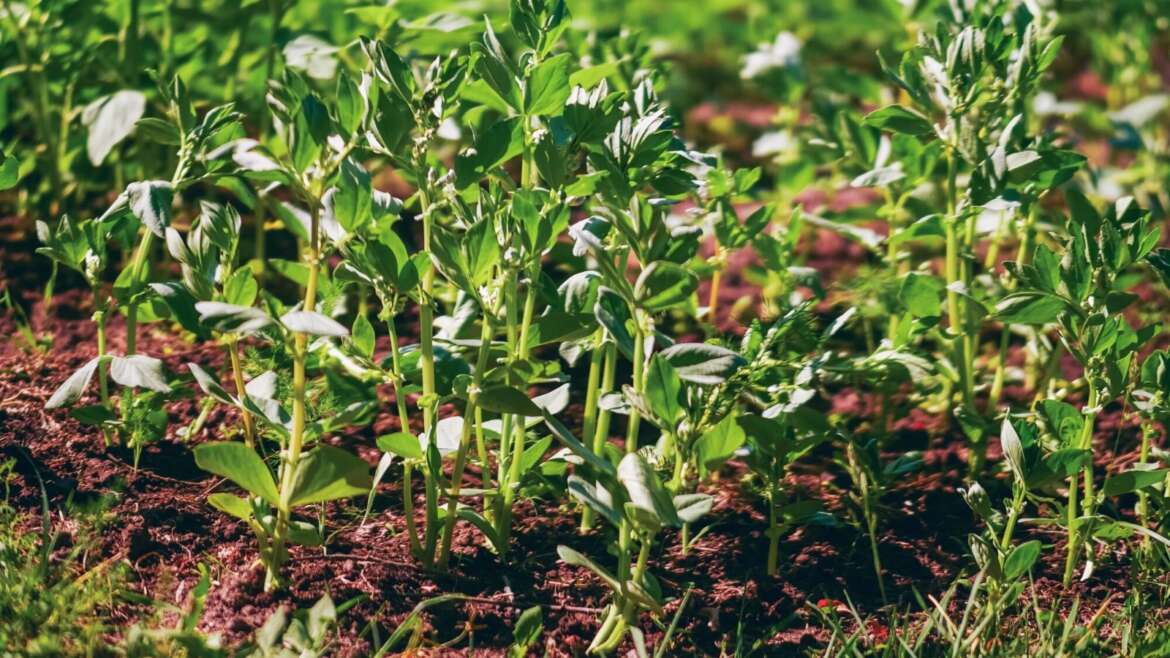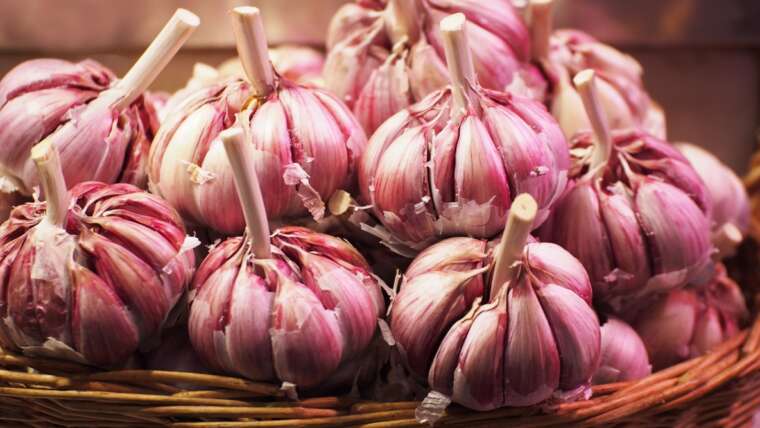The chop-and-drop gardening technique will take your gardening to the next level. But what is it? And how do you get the most out of it? Well, there are a few different ways to execute this method depending on your garden goals. It can be involved or hands-off and low maintenance. There is really no right or wrong way to employ this method, but there are some best practices that will help you avoid potential pests.
We’ll answer some common questions surrounding the technique, including: What are the best plants to use for this method? How do you chop-and-drop crops? Does this technique attract pests? What plant materials should not be used? When should you do it? And finally, how does it benefit the soil?
The Short Answer
The chop-and-drop gardening technique is very straightforward. It’s basically what it sounds like. You “chop” plants at the end of their growing cycle and “drop” them in place, oftentimes right where they were growing. The plants then decompose and add much-needed organic matter back into the earth. This can save you from needing an outside compost source to bring into your garden. It’s also a low-maintenance way to compost your plant materials without needing to set up a bin or other enclosed composting system.
The Long Answer
While the basic definition of chop-and-drop is easy to grasp, some details will help you make the most of it in your garden and limit possible problems. There are almost endless ways to utilize this method that will make it as hands-on or hands-off as you’d like. To get the full benefit, you’ll need to know how and when to employ this method.
There are specific plants that are preferred for use in this method because they release higher levels of nitrogen back into the soil. There is also the potential to attract certain garden “pests” since the use of this method creates a richly decomposing environment.
Plus, certain plant materials should be avoided when using this technique. And finally, you might be wondering, why am I doing this? Below we’ll discuss all of these topics, plus the long-term benefits for your soil and garden overall.
What Are the Best Plants to Use?
Revitalize your soil with nitrogen-fixing plants for healthier crops.
Most often, nitrogen-fixing plants from the legume family are preferred for this method. That’s because many annual vegetable plants pull nitrogen from the soil, so it benefits your overall soil health to add it back in.
There is a reason why the Three Sisters garden method is so successful, and it follows similar principles. In a Three Sisters garden, corn, beans, and squash are grown together. Corn uses up soil nitrogen, and beans return it, maintaining a healthy balance. Commercial agriculture follows this principle as well. Often, commercial farms will rotate their fields between corn in the first year and soybeans in the next year to maintain balanced nitrogen.
You can utilize this method on a smaller scale in your backyard. Once your annual crops have finished producing for the year, pull them out and sow a fast-growing nitrogen-fixing crop like pigeon peas. They grow quickly and create a lot of leafy greens in a short amount of time. Not to mention that the roots are also accumulating nitrogen as they grow. When the roots are left in the ground to decompose, the nitrogen will be available for your crops the following season.
The Verdict
You can use most plants for this method. However, nitrogen-fixing plants are especially preferred since most annual vegetable crops deplete nitrogen levels. Choose plants in the legume family that grow quickly, like hairy vetch, so that you can grow them at the end of the season once your annual vegetables have been harvested. It’s important to remember that you aren’t growing these crops to full maturity, but rather for their nitrogen-fixing roots and their leafy greens that will contribute organic matter to your garden beds.
How Do You Do It?
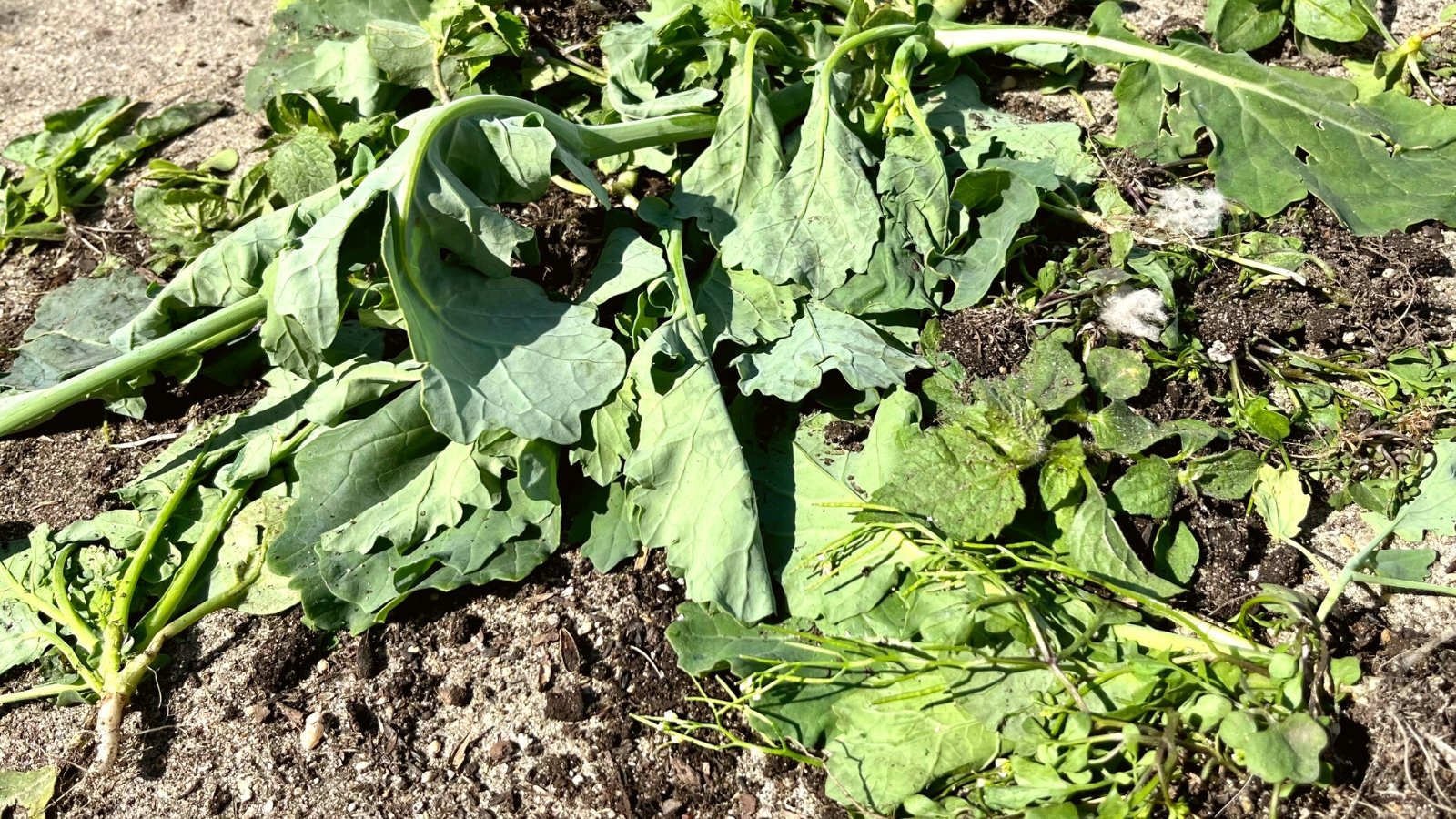 Trim at the base, leave roots, and spread for compost.
Trim at the base, leave roots, and spread for compost.
This part of the process is very straightforward. Simply come in at the base of your plants with pruning shears, a hori hori, or other sharp gardening tools and cut at the base of the plant. You want to leave the roots in the ground to preserve the soil structure and further decompose.
Then, simply drop the leafy green material into the bed or on the ground where they were growing. Try to spread the material around in an even layer. You can even cut up the leafy green plant material into smaller pieces to help it break down faster, but this is not necessary.
The Verdict
Simply cut the plants at the base at ground level, leaving the roots underground. Scatter the leafy green plant material over the area in an even layer.
Does Chop-and-Drop attract pests?
 Invite beneficial insects while managing slugs with chop-and-drop.
Invite beneficial insects while managing slugs with chop-and-drop.
There is somewhat of a double-edged sword when it comes to this method. The chop and drop method does create a moist environment that slugs and snails love. However, it creates an overwintering site for beneficial insects like ladybugs as well.
It also creates an environment where beneficial fungi and other microorganisms can survive. In my opinion, the benefits outweigh the risk of potentially attracting some slugs. Plus, you’re creating a balanced environment that will attract the predators of the slug as well, like ground beetles and toads.
The Verdict
Slugs and snails do love the moist environment created by the chop-and-drop method. But their predators love it, too! In this case, the benefits of enriching your soil and creating overwintering sites for other insects, like ladybugs, outweigh the risks.
What Plant Materials Should be Avoided?
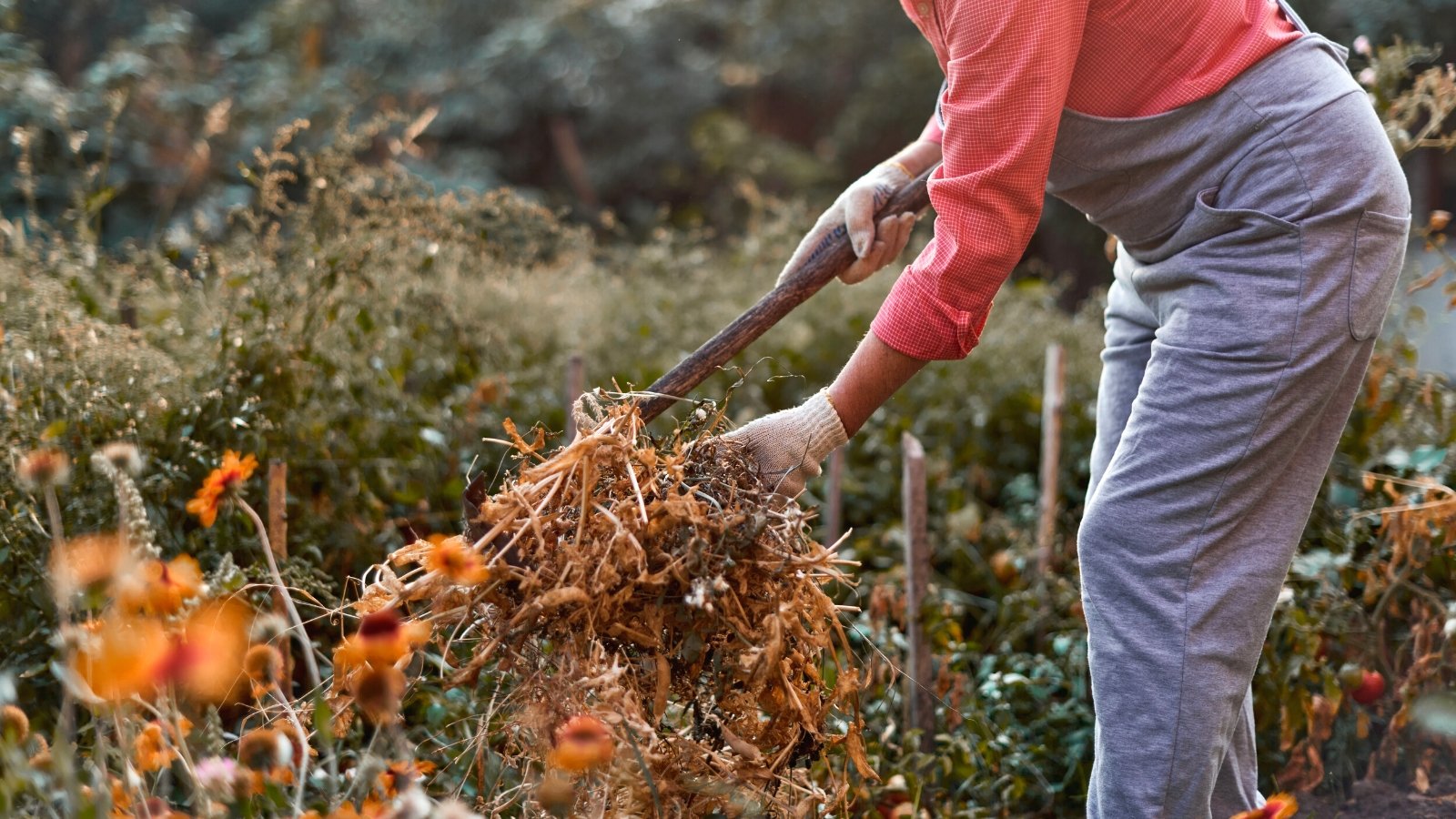 Select healthy plants to avoid disease spread in chop-and-drop.
Select healthy plants to avoid disease spread in chop-and-drop.
Most annual plants can be used in this method. However, you want to avoid using diseased foliage that has been infected with powdery mildew, blight, verticillium wilt, or other soil-borne fungal diseases. In hot compost piles, powdery mildew and blight spores might be killed.
However, the chop-and-drop method is more similar to a cold composting system. And powdery mildew spores can survive over winter. Not to mention that verticillium wilt can even survive hot composting systems. For this reason, it’s best to dispose of any diseased foliage rather than use it as a part of this method.
You’ll also want to avoid vines of other plants that can spread from cuttings. Vines, like Virginia Creeper and vetch, can set roots from nodes that appear along the vine. Wherever a node touches the ground, it will put out roots and become its own established plant. Even chopping these vines into small pieces and removing them from the main plant does not stop them from rooting. Avoid using these types of vines when using chop and drop.
The Verdict
Most annual plants can be used as a part of this method. However, you want to avoid using diseased plants or vines that can set roots and regrow on their own, potentially taking over your garden beds.
When Should You Chop-and-Drop?
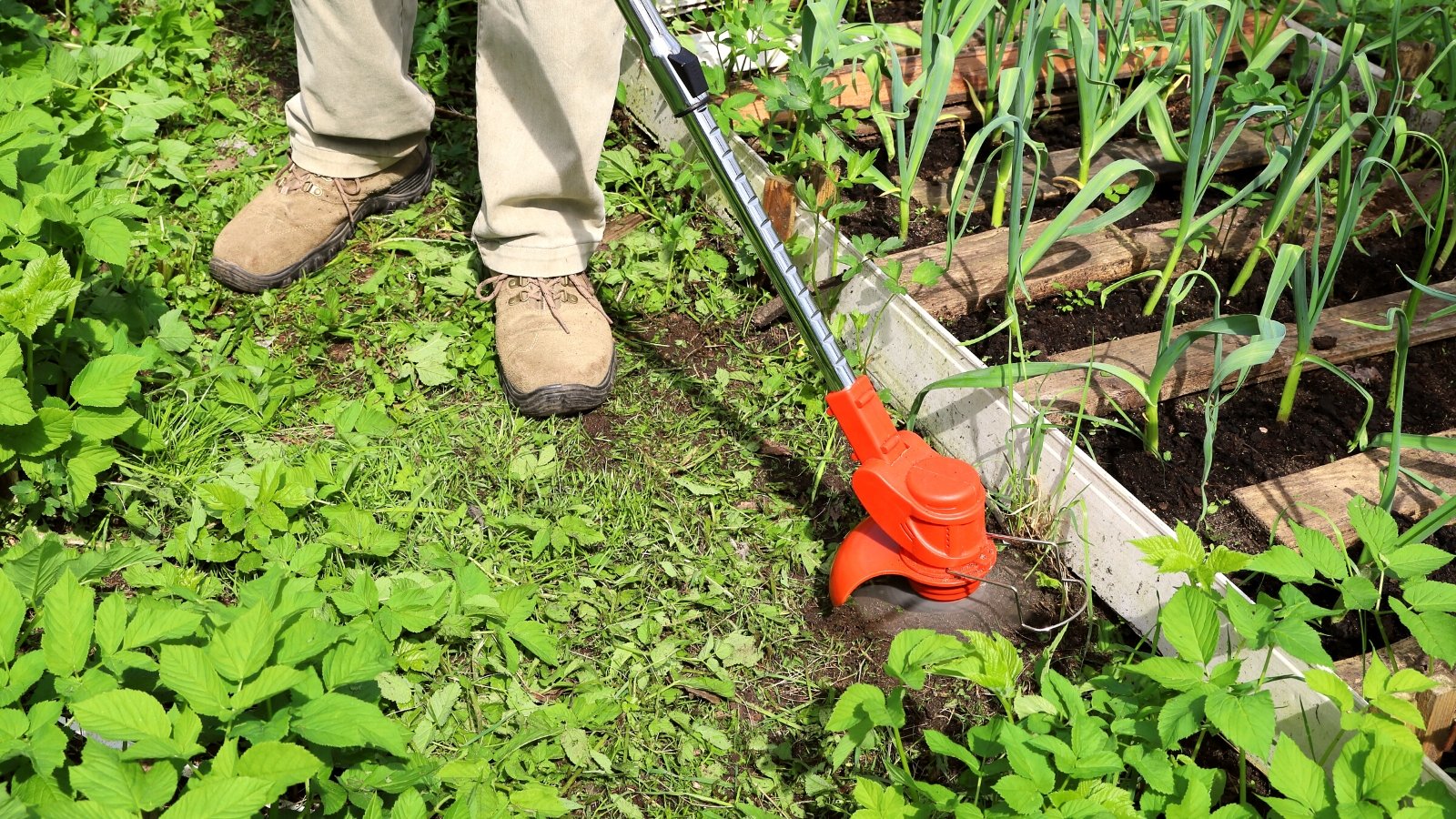 Chop and drop at season’s end, before plants seed.
Chop and drop at season’s end, before plants seed.
It’s best to use this method at the end of the growing season when plants and harvests are winding down. You don’t necessarily have to plant a separate crop for this method. You could simply chop-and-drop the annual crops that you’ve been growing all year.
However, be sure to use this method before the plants have gone to seed. If you chop and drop after the plants have gone to seed, you might end up with unwanted seedlings popping up the following spring. The best time to do this is when your plants are just beginning to flower.
The Verdict
Chop plants down at the end of the growing season. Be sure to do so before they have gone to seed and as the plants are beginning to bloom. Otherwise, you may have unwanted seedlings the following season.
How Does it Benefit the Soil?
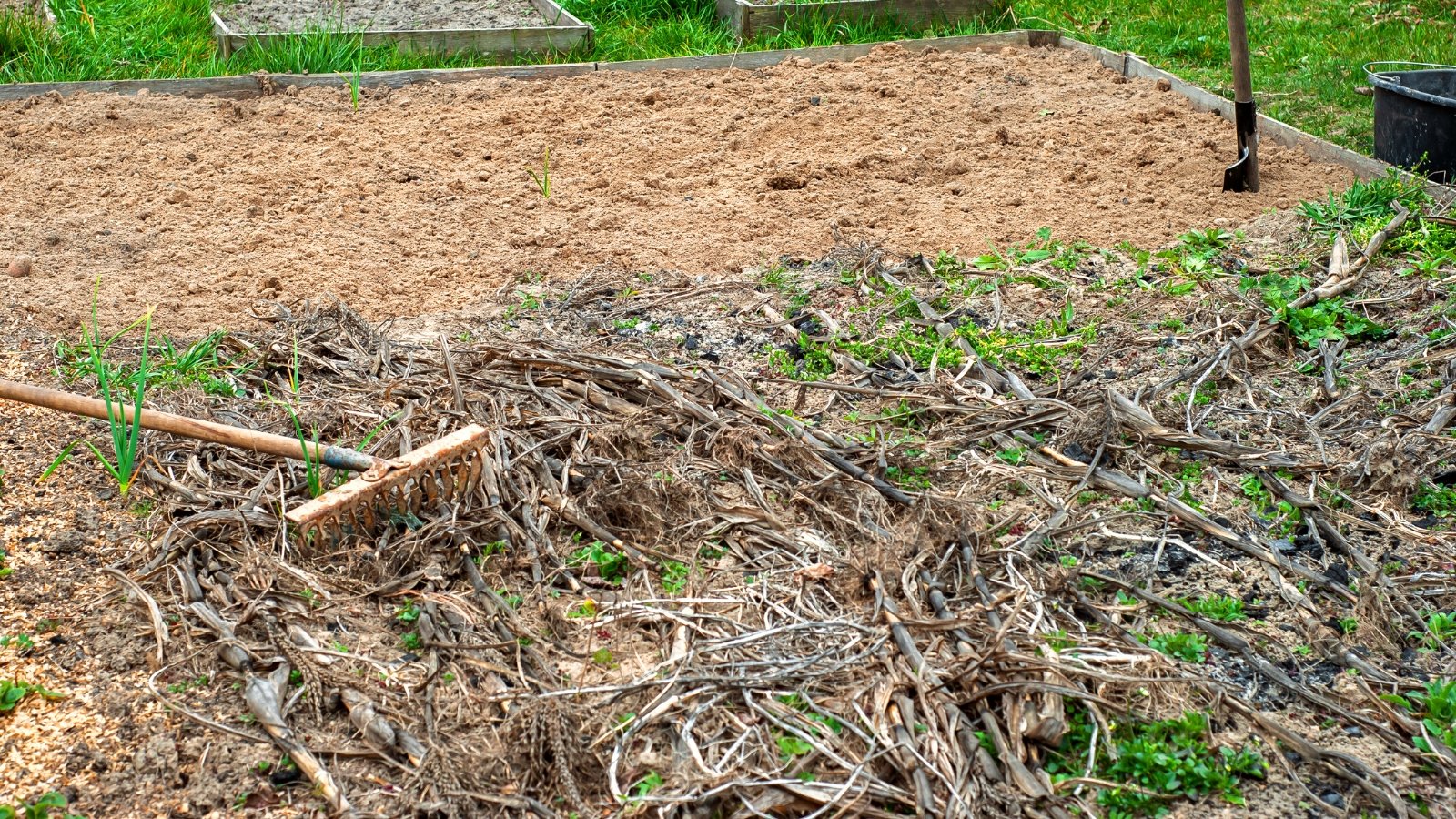 Chop and leave roots for enriched, protected soil over winter.
Chop and leave roots for enriched, protected soil over winter.
By chopping the plants down instead of pulling them, you are leaving the roots intact. Decomposing roots add nitrogen to the soil (when they are the roots of a nitrogen-fixing crop). The biomass from the leafy greens and other plant materials like stems add organic matter.
This decomposing organic matter will act as a mulch and protect the soil from harsh winter conditions by helping to retain moisture and protect it from wind erosion. It also provides shelter for beneficial bugs over winter.
The Verdict
There are many benefits to using this method in your garden, like improving soil structure, increasing nitrogen, adding organic matter, and creating a mulch to keep your soil protected. Not to mention creating a haven for over-wintering beneficial bugs.
Final Thoughts
There are many reasons to utilize the chop-and-drop method in your garden. You can get all the benefits of composting without needing to set up a contained compost bin or other systems.
You will enrich your soil with nitrogen and biomass and protect it over winter with this mulch in place. Plus, you will be providing shelter to beneficial insects. All of these benefits will become abundantly clear in the following seasons’ growth!


